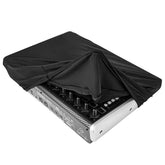Optimizing Piano Practice: Insights from Science and Strategic Time Management
by
linzz
30 Jan 2024
01. Scientific Approach to Piano Practice Time
Experiments indicate that when a certain part of the body is in motion, the activity of cells in a specific region of the brain becomes more pronounced, as detected by instruments. Simultaneously, the amplitude of brainwaves increases progressively with the passage of time, as illustrated by the instrument's recordings.
Researchers conducted a similar experiment, having musicians practice continuously for 30 minutes, followed by a rest of 5 to 10 minutes before resuming playing. The recorded amplitude of brainwaves continued to rise beyond the baseline established in the initial 20 minutes. Additionally, the height of the waveforms continued to ascend.
This experiment suggests that the most effective practice method involves consecutive sessions of no more than 30 minutes, followed by a 5 to 10-minute break, and then resuming practice for a similar duration. Understanding this scientific theory and the physiological characteristics of the human body allows us to sensibly manage our piano practice time.
This approach not only keeps the mind alert but also promotes relaxation, preventing excessive fatigue. This is especially crucial for pure finger exercises to avoid "straining the tendons and bones" due to prolonged practice.

02. Time Allocation
Planning and organizing piano practice time within a limited timeframe contribute to more effective learning of musical pieces. The piano requires mastery of numerous elements. Often, we find ourselves practicing multiple pieces simultaneously, and during the practice, one realizes that attention and physical stamina are both finite.
Therefore, it is advisable to tackle more challenging pieces at the beginning, reserving easier ones for later. Fundamental exercises are necessary but need not consume excessive time. It's better to practice with focus and precision. Depending on personal preferences, these exercises can be done before or after the main practice session.
Even if you have only five minutes of practice time each day, consistent and high-quality practice can still lead to improvement. Cultivating a daily practice routine, even if moderately timed, ensures continuous progress. Naturally, someone who practices for two hours daily will advance much faster than someone who practices only for an hour.







